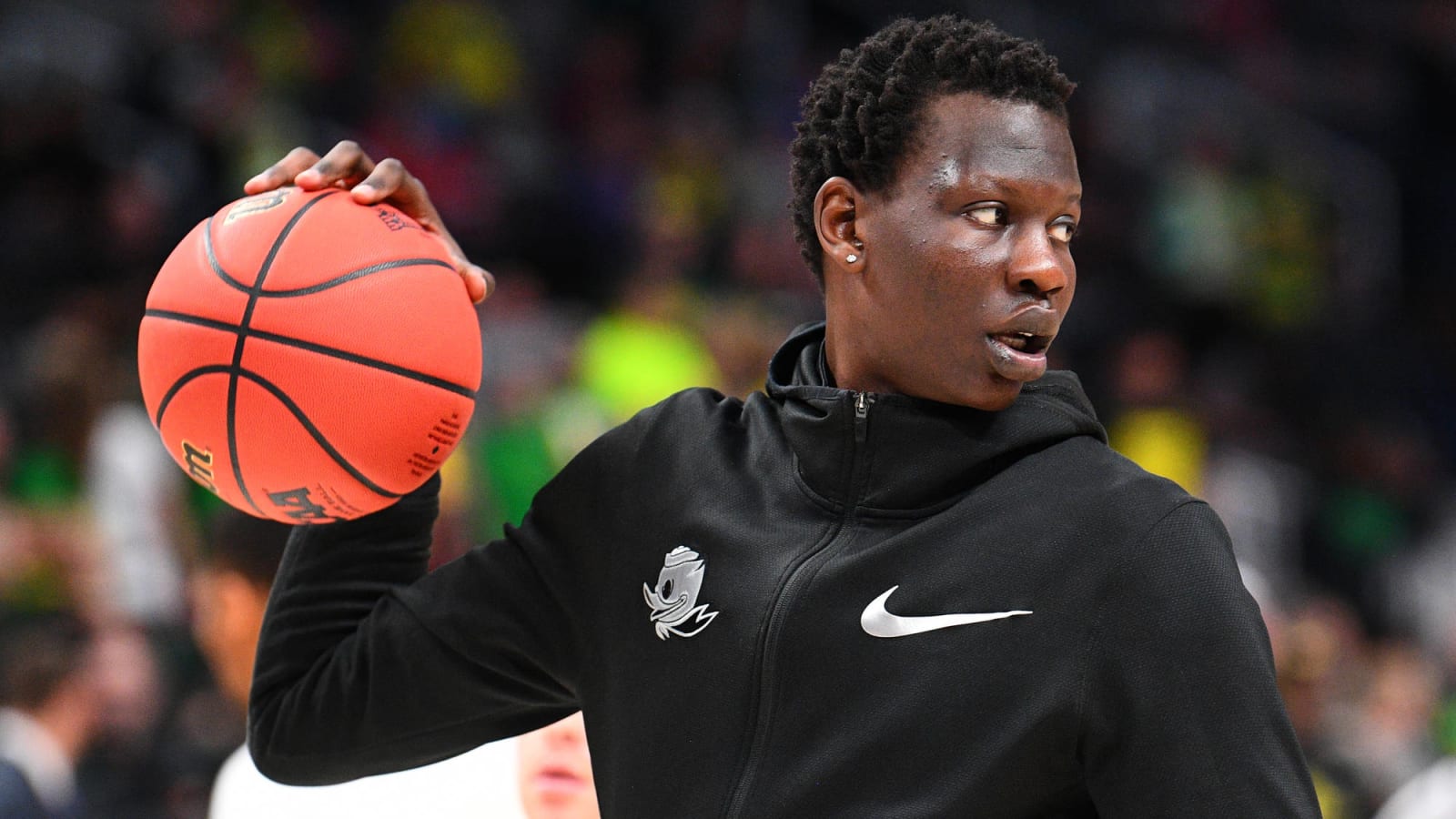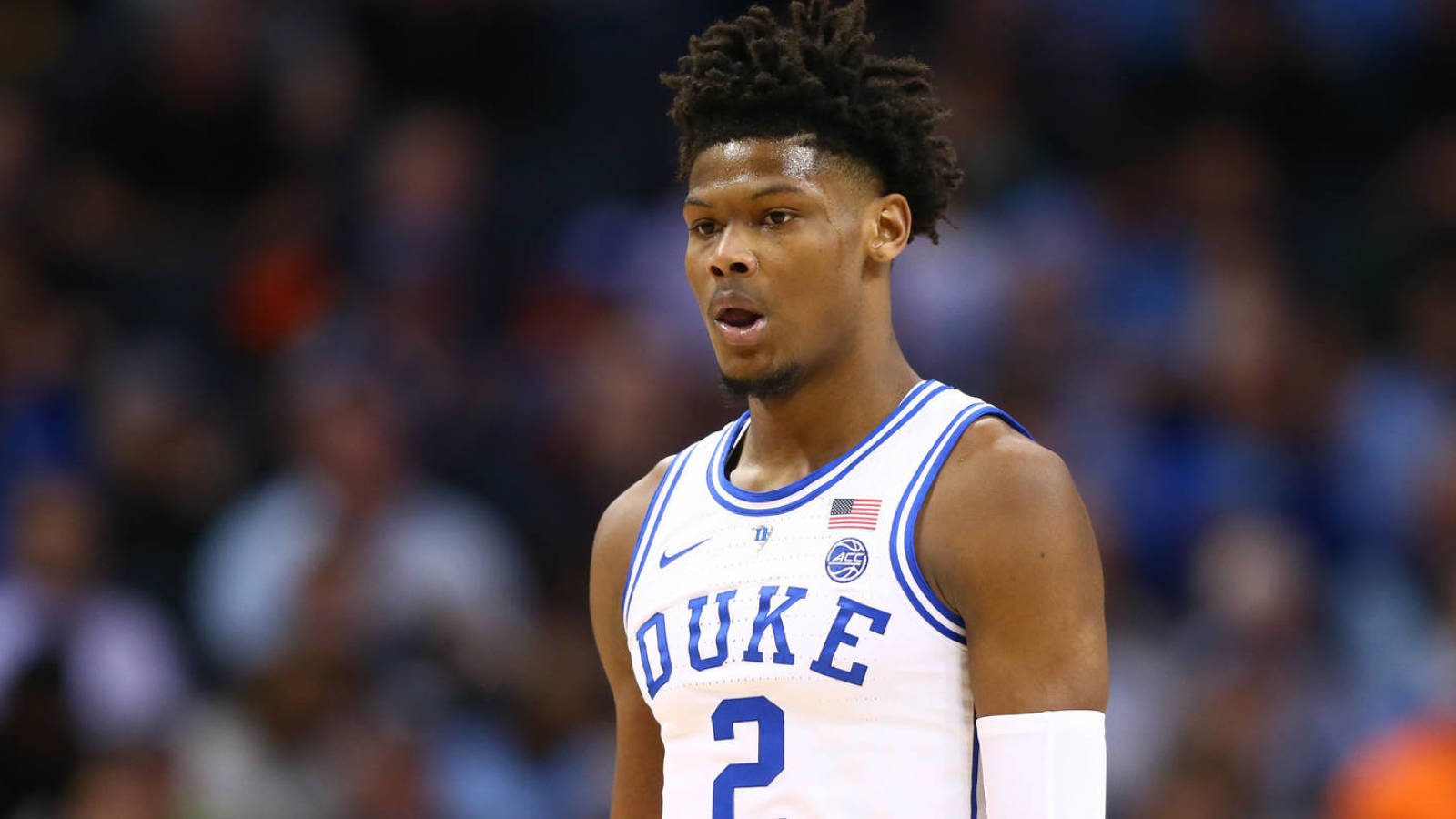
NBA Draft: Five players the computers love; five they hate
As the NBA Draft approaches, players fly across the country doing workouts and mock drafts multiply across the internet, decision-makers are faced with the eternal dilemma: Trust the scouts and the famous “eye test” to drive their draft decisions or go with the dispassionate statistical analysis of a computer projection system.
While some players kill it with the scouts and the quants — presumptive top two picks Zion Williamson and Ja Morant excel with both — there are much bigger splits as you move down the draft board.
Let’s take a look at the players the advanced stats and projections systems love, as well as those scouting favorites who are high on mock drafts but low on the analytics spreadsheets.
LOVE
Bol Bol, Oregon: Although he played only nine games for Oregon last year, the computers love what they’ve seen from Manute Bol’s son, Bol Bol. The most impressive thing was his block rate of 12.4 percent, which gives him the highest blocked shot projection since Hassan Whiteside, according to ESPN’s Kevin Pelton.
Bol also contributed nearly a 30 percent defensive rebounding rate, shot 52 percent from three-point range and 75.7 percent from the free-throw line, which led to a true shooting percentage of 63.2 percent. If he hadn’t broken his foot and missed most of the season, Bol, Bol might be a top-four pick. As things are now, the projections are so high that teams may ignore the injury risk to take a flyer on a potential 7-foot-3, sweet-shooting unicorn.
Brandon Clarke, Gonzaga: Clarke transferred to Gonzaga from San Jose State a year ago and absolutely dominated in the statistical rankings. He registered a 10.0 in defensive regular adjusted plus minus thanks to his excellent shot blocking, and he was second in overall box score plus minus behind only Williamson, who was a 20.0. Both were way ahead of the guys behind them. Clarke is already 22 and didn’t do amazingly at the combine, but if you trust the projections and the on-court results more than you fear his short arms, Clarke should be a high pick.
John Konchar, Purdue-Fort Wayne: This 23-year-old guard from Purdue-Fort Wayne was the most statistically dominant college player you’ve never heard of. He led the NCAA with a 63 percent true shooting percentage and led in offensive rating, and even though he’s just 6-foot-5, he had the second-best rebound rate. For his college career, he shot 42 percent from behind the arc. Konchar is 23 and played in the Summit League, which dulls his luster a bit. But his playmaking and shooting should make him a useful player, even if that happens to be for a team in the G League or in Europe.
Matisse Thybulle, Washington: While his shooting numbers weren’t great in his final season at Washington, Thybulle has hugely encouraging defensive numbers, easily leading the nation in steals and steal rate and delivering an 8.4 percent block rate, which is impressive from the guard position. For his college career overall, his shooting was much closer to average than putrid, which is totally acceptable for the best perimeter defender in the draft.
Chris Clemons, Campbell: Campbell’s Chris Clemons became the third-leading scorer in NCAA history for his career, scoring over 30 points per game this season. He was third in offensive box score plus minus and rebounded well from the guard position. But his biggest negative, numbers wise, is the one next to his height: 69 inches. It’s difficult for a 5-foot-9 player to stick in the league no matter how athletic he is (44-inch vertical leap) or how well he shoots free throws (85 percent for his career). If Clemons were 6-foot-1, he’d be a lottery pick.

HATE:
Cam Reddish, Duke: Reddish is a player the scouts love who had an unimpressive freshman year at Duke. He’s supposed to be a scorer, but he shot only 35.6 percent from the field and 33.3 percent from three-point range. Reddish is supposed to be a good passer, but his assist rate was only 10.7 percent. He could have simply been the victim of a Duke offense where he was the third option behind Williamson and R.J. Barrett. Projections that consider his excellent high school performance like Reddish far more. But shooting under 40 percent on two-pointers is unusually low for a projected lottery pick.
R.J. Barrett, Duke: Another Duke player whose efficiency suffered due to his team's lack of shooting and spacing, Barrett shot just 30.8 percent from three-point range and only 66 percent from the line. He has a spectacular projected usage rate, though efficiency translates better from college to the pros. Scouts love Barrett because of his size and explosiveness, plus a scoring mentality that earned the Canadian the nickname "Maple Mamba." His steal and block rates are both near the bottom of the top prospects, and he’s a skilled but not frequent passer. He’s going to have to shoot better to be the All-Star so many believe he’ll eventually become. Given his age — he’s still only 18 — we’d bet on him even if the computers are skeptical.
De’Andre Hunter, Virginia: Hunter’s projections may be low because his defensive statistics are lacking. Computers don’t know that Hunter was the ACC Defensive Player of the Year or that Virginia plays a style predicated on avoiding mistakes. They just see low steal and block rates, plus pedestrian numbers in rebounds and assists. Hunter’s three-point shooting was excellent, a sign he should succeed as a “three and D” guy in the NBA. But the projections indicate he might not have the star potential you’d expect from a high lottery pick.
Romeo Langford, Indiana: Romeo Langford certainly looks like an NBA prospect, standing 6-foot-6 and weighing 216 pounds — seemingly an ideal pick-and-roll guard. It's ideal except for his lousy three-point shooting, which was 27 percent for his lone season at Indiana. Langford scored and got to the foul line, but he didn’t do much else on offense. His assist rate was just 14 percent, and he turned it over nearly as often as he delivered a dime. There’s still hope for his shooting, since he made 72 percent of his free throws, but Langford is going to need to shoot much better if he’s going to become an NBA star.
Nassir Little, North Carolina: Like Langford, Little was a highly regarded freshman who couldn’t make an outside shot at the college level. He made only 14 three-pointers on the season and shot 27 percent. His defensive numbers were extremely underwhelming, with few steals and blocks, and he also had few assists. Little did shoot 77 percent on free throws, which is a sign that his shooting could turn around in the NBA — college free-throw shooting is actually better correlated to NBA three-point shooting than college three-point shooting. But other than that, the computers are impressed only by Little’s two-point shooting.
More must-reads:
- NBA mock draft 6.0: Chaos edition features Anthony Davis trade
- Ranking the top 50 NBA Draft prospects, from Zion to Franks
- The 'Yearly NBA playoff leaders in PPG' quiz
Breaking News
Customize Your Newsletter
 +
+
Get the latest news and rumors, customized to your favorite sports and teams. Emailed daily. Always free!

